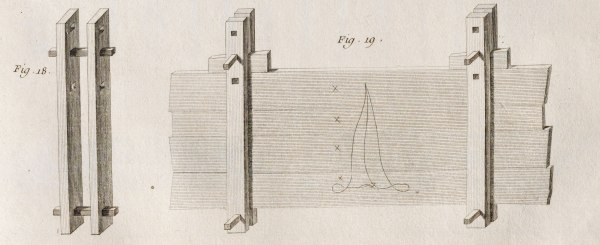Undercarriage Assembly –
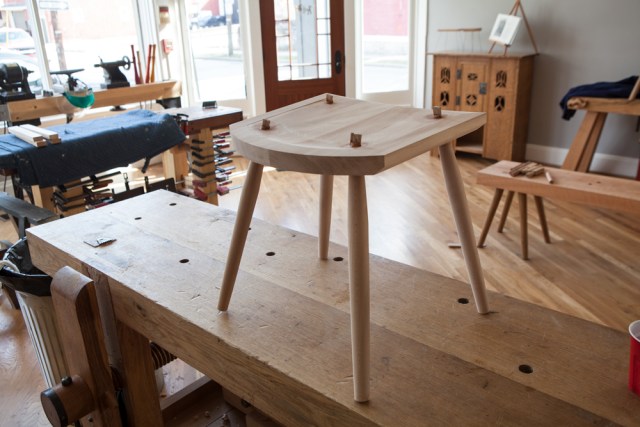
Gluing and wedging the legs into the seat is pretty easy if you don’t have stretchers between the legs. But there are still lots of opportunities to mess things up and get into a bind when you open the glue bottle.
Here’s how I prepare for the glue up so I don’t have many surprises.
First I knock the legs into the seat and pencil around all the tenons – both above the seat and below the seat. The mark around the tenon above the seat tells me about where I should crosscut the tenon before assembly. The mark around the tenon below the seat tells me at what point I should stop sawing a kerf for the wedges.
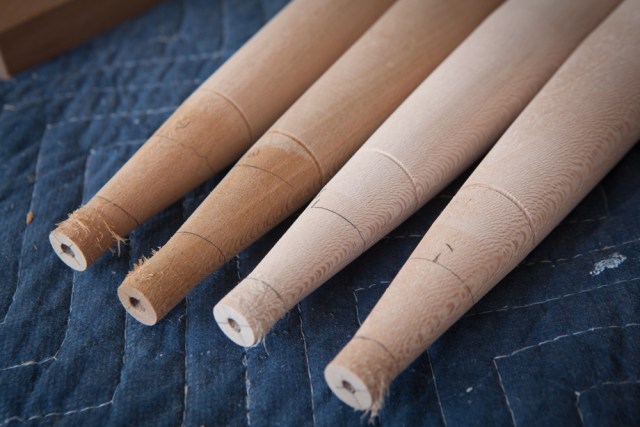
With the legs still in the seat, I also number each one and mark its position in the seat so the leg’s annular rings run parallel to the grain in the seat. I know that this runs contrary to some sound advice out there. Here’s my rationale:
If the legs are going to shrink, they are going to shrink more in the direction parallel to the rings than they will shrink perpendicular to the rings (that’s the way trees work). So I want to apply a wedge against the annular rings to resist this shrinkage. So the annular rings in my legs run front to back, the grain in the seat runs front to back and the wedge cuts across the legs’ annular rings.
Honest: I am not trying to talk anyone into doing it this way, and I am certain other tactics work. But this is what suits my head at this time.

Then I kerf the tenons with a tenon saw, stopping short of the pencil line representing the underside of the seat.
I gather all the materials I need for assembly and lay them out on the bench. This includes extra wedges, rags, a toothbrush for cleaning up the glue, a cup of hot water, several mallets and hammers and a 1/2″ chisel.
To assemble, I paint hide glue on the inside of one mortise. Then I paint glue on its tenon and drive the leg home. I strike the leg with a 2-1/2 lb. sledge until its stops moving into the seat when I strike it. Repeat for the other three legs.
I clean up any glue on the underside of the seat then flip it over.
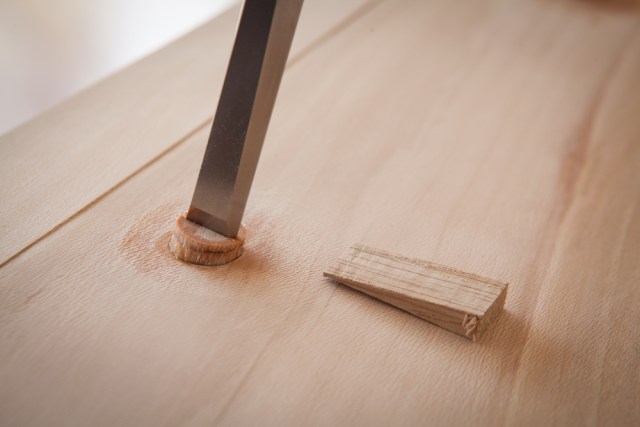
Usually, driving the legs into the seat will close up the kerfs I just sawed in the tenons. Instead of trying to wedge the closed kerf and risk destroying some wedges, I open up each kerf with a 1/2″ chisel and a few mallet blows. This reduces wedge failure by about 345 percent.
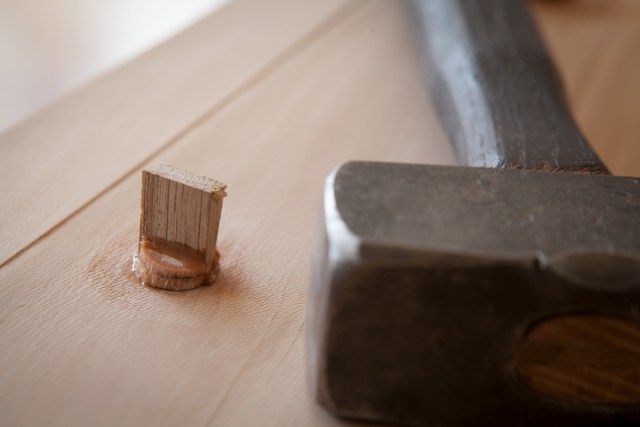
I paint glue on a wedge and drive it in with my hand sledge. When the wedge stops moving, I stop hitting it.
Finally I clean up all the glue I can find with rags and a toothbrush. I put the chair on a bench and walk away, resisting the urge to fiddle with it too much and make it worse.
— Christopher Schwarz



